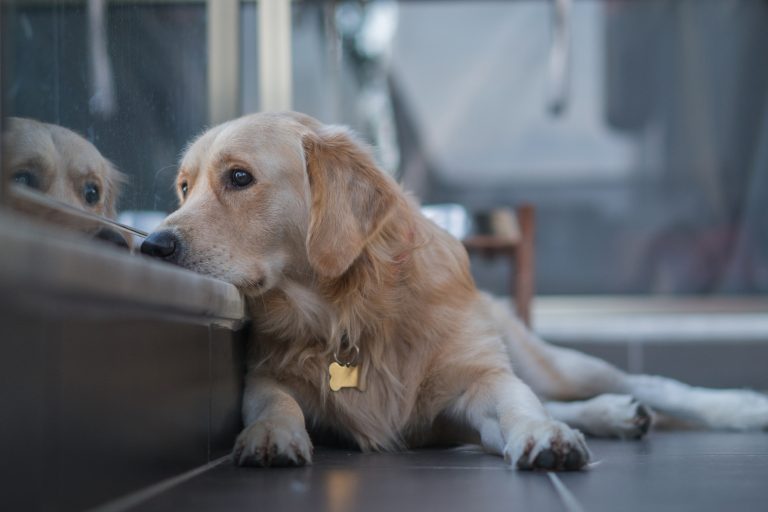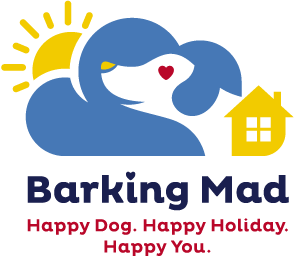Separation Anxiety in Dogs
There are a number of reasons why dogs can suffer from separation anxiety when left alone. Separation anxiety in dogs is triggered when they become upset because they are separated from their owners or the people they love. This anxiety can occur because the dog is not familiar with being alone or because of past experiences of being left alone for long periods. It can also be difficult for owners to leave their dogs in such a distressed state. So, we have put together a guide on how to keep your dog calm when left alone and how to reduce their separation anxiety.
Separation anxiety in dogs is a behavioural condition where a dog experiences extreme distress when separated from their owner. This distress often results in destructive or anxious behaviour, such as excessive barking, drooling, pacing, chewing, and even attempts to escape. It’s a common issue that can affect dogs of all ages, and understanding its causes and how to address it is key to managing the condition effectively.
What Causes Separation Anxiety in Dogs?
Several factors can contribute to the development of separation anxiety in dogs:
Change in Environment or Routine
Dogs are creatures of habit, and any significant change in their environment or daily routine can trigger anxiety. This could include, moving to a new home, a change in the family dynamic (e.g., a new family member or pet), a change in the owner’s work schedule or routine.
Past Traumatic Experiences
Dogs that have had previous traumatic experiences—such as being abandoned, rehomed multiple times, or spending long periods in shelters are more likely to develop separation anxiety. The fear of being left alone can become ingrained, causing distress whenever their owner leaves.
Lack of Proper Socialisation
Puppies that haven’t been properly socialised with humans or other animals may develop anxiety when separated from their owner. Early socialisation is crucial in helping dogs build confidence and reduce anxiety when alone.
Overattachment to the Owner
Some dogs, especially those with a more sensitive temperament, may form an excessive attachment to their owners. This strong bond can lead to separation anxiety when the dog feels it can’t be near its owner.
Changes in the Owner’s Schedule
If an owner has been at home a lot (for example, due to working from home) and suddenly begins leaving for longer periods, the dog may struggle to adjust to the new separation. The sudden absence of their primary caregiver can trigger anxious behaviour.

Signs of Separation Anxiety in Dogs
There are a few very clear signs your dog may be suffering from separation anxiety, these include:
- Pacing
- Chewing and destruction
- Urinating
- Continual barking
- Running away
However, there are more subtle signs that you may have missed that indicate your dog may be struggling. These signs include trembling and whining, self-mutilation, repetitive behaviour, vomiting and excessive salivation.
You may not know these things are happening when you are away and your dog may have calmed down by the time of your return. So, it’s a good idea to set up a dog-watch camera in your home and check on your pooch throughout the day to see how they are handling being left alone. If you notice these signs, try not to worry as there are many different things you can do to help.
How to Treat Separation Anxiety in Dogs
Tire Your Dog Out
This is a simple but key solution, take your dog out for a long walk before you are due to leave. Not only will this tire them out, but it will also help to relax them and also give them chance to go to the toilet – minimising accidents at home whilst you are away.
Leave a Special Treat
Leave out a special toy that they only get when you leave. Meat flavoured chewy toys, a Kong, a treat ball or a teddy are all great ideas to use. Give your furry friend this specific toy only when you separated from them. When you return, immediately remove the dog toy and only give it back when you leave again. This way your dog will look forward to receiving the toy on your departure and it will be a tasty distraction for them.
Remove Disturbances
Close your curtains to provide a serene environment for your dog, this will eliminate distractions from outside, other dogs and walkers nearby may provoke a reaction from your pup when they are already feeling stressed. Leave the curtains closed and put on the radio, the voices of others may help soothe your dog, making them feel less alone.
Don’t Punish Bad Behaviour
If you come home and your dog has created a huge mess, destroyed furniture or toileted in the house it can be difficult to keep calm. However, it is really important to stay relaxed. Punishing your dog for its behaviour while you are away will only make the anxiety and behaviour worse when you next leave. Avoid letting your pooch know you are annoyed, put them outside while you clean up and remain calm.
Dog Separation Anxiety FAQ
Can you train a dog out of separation anxiety?
Yes, separation anxiety can be managed and improved with training, but it often requires time, patience, and consistency. Training typically focuses on helping the dog feel more comfortable when left alone. This may include gradual desensitisation (slowly getting the dog used to being alone for longer periods) and counter conditioning (associating your departure with something positive, like a special treat or toy). Working with a professional trainer who has experience in behavioural issues can also help.
Do dogs grow out of separation anxiety?
In some cases, dogs may improve as they age, but separation anxiety doesn’t typically go away on its own. If the anxiety is left unaddressed, it may persist or even worsen. However, with proper training, gradual desensitisation, and management, many dogs can become more comfortable when left alone over time.
Can anxiety in dogs be cured?
While separation anxiety and other forms of dog anxiety may not be fully “cured,” they can often be managed effectively. With proper training, exercise, mental stimulation, and sometimes medication, anxiety in dogs can be reduced significantly, helping them lead a happier and more relaxed life. In some cases, professional intervention, such as a behaviourist or vet, may be needed to create a treatment plan.
How do you stop a dog from crying when you leave?
To stop your dog from crying when you leave, consider these tips:
-
Practice short departures: Gradually get your dog used to being alone by leaving for very short periods and increasing the duration over time.
-
Create a calm environment: Provide calming aids such as a cosy bed, toys, or a safe space for your dog when you’re not home.
-
Avoid long goodbyes: Keep departures and arrivals low-key to prevent reinforcing anxiety.
-
Desensitise with positive reinforcement: Reward your dog when they are calm during your departure. Over time, they will associate your leaving with something positive, like a treat or favourite toy.
What medication is used for separation anxiety in dogs?
In the UK, Clomipramine, commonly sold under the brand name Clomicalm, is the main medication used to treat separation anxiety in dogs. This tricyclic antidepressant works by boosting serotonin and norepinephrine levels, which can help reduce anxiety and depression. It’s often prescribed in combination with behavioural therapy to assist dogs in managing their distress when left alone.
Consider a Dog Sitter
If you have tried all of the above and your dog is still extremely anxious when you leave them alone, it may be worth considering a dog sitter. The dog sitter will comfort the dog on your departure and care for them while you are away. This may also ease your stress knowing they are safe and comfortable while you are away.
At Barking Mad, we are your local dog home boarding service giving you complete peace of mind when you can’t take Fido with you. Our family of dog holiday experts provide luxury pet care in our experienced hosts’ cosy homes. Barking Mad was established in 2000 as the original alternative to kennels. Our professional dog sitting service works by meeting you in person for bespoke care because we believe dogs deserve a holiday too!
Please note:
Barking Mad, the UK’s leading home dog boarding provider, assumes no liability for the content of this page. This advice is only intended as a guide. Please contact your local veterinary practice for advice or treatment immediately if you are worried about your pet’s health – even if they are closed, they will always have an out-of-hours service available.




